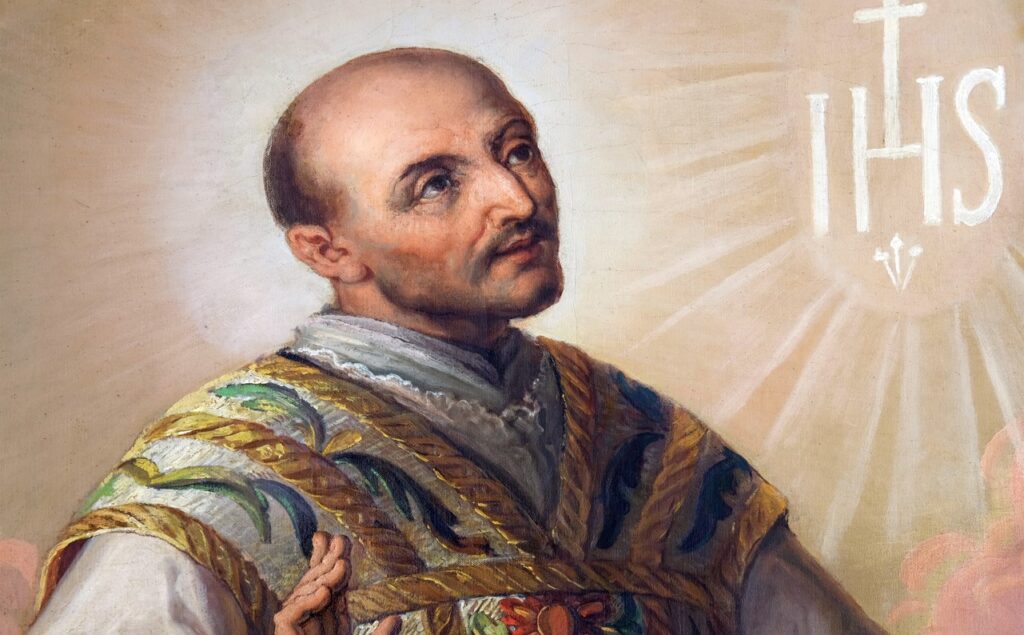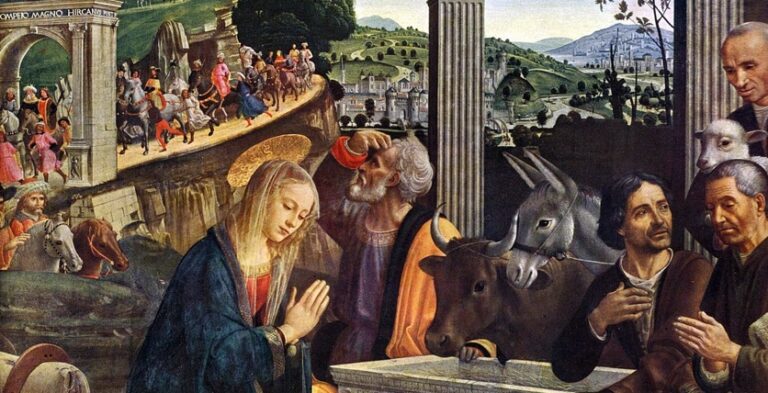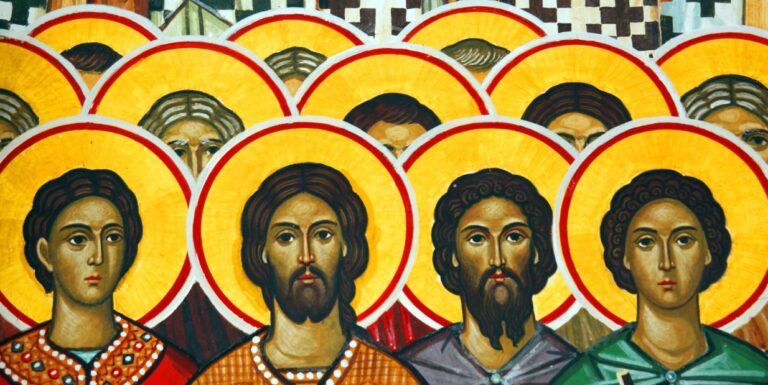
ST. IGNATIUS OF LOYOLA

If you think back on growing up as a Catholic, you may discover many ways that St. Ignatius of Loyola has influenced your faith development. St. Ignatius left an indelible mark on the Catholic Church. This was a saint who took bold risks and challenged the status quo. He and his colleagues formed the Society of Jesus, the Jesuits as we know them today. He was influenced by another prolific saint, St. Francis of Assisi. In 1539, St. Ignatius and his confreres, including St. Peter Faber and St. Francis Xavier, formed an order that would follow the example of St. Francis of Assisi. They prioritized working for the poor and living out their vocation in service to others. St. Ignatius’ actions appeared radical at the time, even resulting in being questioned before the Inquisition. He found middle ground recognizing that God can be found in all things.
In high school, we went on grade level retreats to Manresa in Pickering with the Notre Dame sisters. St. Ignatius of Loyola is the patron saint of retreats. The Manresa retreat house east of Toronto is named after the city that is seen as the cradle of the Jesuit order. In the landscape of Manresa, there was a cave where Ignatius hid himself away, fasted and lived in austerity and wrote his famous Spiritual Exercises – which remain a fascination for many Christian faiths today. The Exercises are a way of understanding and living one’s relationship with God.
When Martin Scorsese directed the film Silence, the actor Andrew Garfield embarked upon the Spiritual Exercises in preparation for the film. In interviews, he describes how this was life-changing. This is how our lives are transformed. Through reflection and discernment, we strengthen our relationship with God. We come to find God in many ways, not within our church experience alone, but in constant prayer and in interior work that allows us to be all we are created to be. During the Spiritual Exercises, you meditate on the Gospels and imagine yourself within the scenes. What influenced St. Ignatius to emphasize this creative approach to prayer and discernment?
St. Ignatius’ life, like the lives of many saints, began in comfort and prosperity. He had been a soldier and was severely injured. During his year-long convalescence, he read a book, Vita Christi by Ludolph of Saxony, about the Gospels and the life of Jesus. This famous book of the time provided meditations and prayers. His reading of the book led to the conversion of St. Ignatius and his determination to bring Christ to others.
This reflection barely touches on the life of St. Ignatius and the wealth of wisdom and impact he had on the Catholic faith. This is what I find fascinating about our saints. Four hundred years later, his influence is as relevant as ever. The Spiritual Exercises and the Ignatian Examen (a prayerful reflection on the events of the day) are valuable tools for deepening our relationship with God. Also, St. Ignatius wrote more than 7,000 letters. His works point to a synodal way of being – learning to listen deeply.
Pope Francis, himself a Jesuit, exemplifies an Ignatian approach to leadership. Laudato Si’ and Fratelli Tutti compel us to transform the world, beginning with ourselves.
The beauty of this wonderful saint can be summed up in the last lines of the Suscipe of St. Ignatius: “Give me your love and your grace; for with this, I have all that I need.”
St. Ignatius of Loyola, pray for us.
Jan Bentham is a retired Religion Coordinator with the Ottawa Catholic School Board. She is a musician, serving in music ministry at St. Ignatius Parish in Ottawa. She currently works at St. Paul’s University with the Catholic Women’s Leadership Program.


